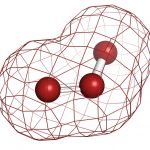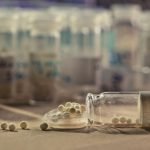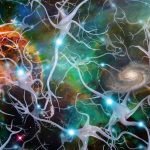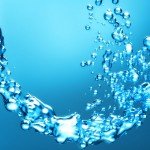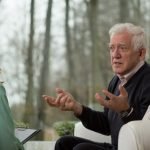Bone Marrow Tonic Botanicals
Eric Yarnell, ND
Various conditions associated with aging – as well as some that can occur at any age – are characterized by reduced bone marrow function. Cancer, along with chemotherapy and radiation therapy, are common causes of bone marrow suppression. Various immunological disorders, such as autoimmune anemias, can also cause problems. Herbal medicines offer an interesting tool to attempt to resolve some of these cases.
Berberis and Mahonia
Berberis and Mahonia species plants have been utilized, particularly in TCM, as bone marrow stimulants. Research conducted in China has focused on berbamine, an alkaloid found from these plants, as a key mediator of this effect. In mice, berbamine was demonstrated to increase neutrophil and lymphocyte counts, apparently by stimulating bone marrow stem cell differentiation (Li et al., 1994). In an uncontrolled clinical trial of 405 patients of all ages with leukopenia due to drugs, radiation or benzene poisoning, 50mg of berbamine by mouth three times per day raised WBC count significantly in 80% of patients (Yang et al., 1982). It is unknown but likely that crude extracts at sufficient doses could be sufficient to obtain these effects, particularly combined with some of the other herbs mentioned in this column.
Panax spp
Adaptogenic immunomodulator plants have huge potential as bone marrow protectors and tonics. Panax ginseng (Asian ginseng) is traditionally considered a useful treatment for patients with anemia. Bone marrow from healthy people and some with aplastic anemia were cultured with a total saponin extract of P. ginseng (Gao et al., 1992). As long as some stem cells remained in the bone marrow, the saponins could stimulate their differentiation. In those aplastic anemia patients with essentially no stem cells left, the extract was not effective. Granulocyte-macrophage progenitor cells particularly have been shown to be stimulated by ginsenosides Rg1 and Rb1 in vitro (Niu et al., 2001).
An injectable form of the TCM formula shenmai, containing P. ginseng (ren shen) and Ophiopogon japonicus (mai men dong), was investigated in a randomized trial involving 65 patients with chronic aplastic anemia (Tang et al., 2005). All patients received conventional medical treatment. Those who also got shenmai had significantly greater reductions in tumor necrosis factor levels and decreased bone marrow apoptosis rates compared to those who did not.
Angelica sinensis
The root of dang gui is largely thought of as a hormone modulator in the West, but its actions are more diverse and complex. Its polysaccharides have been shown to offset the marrow suppressive effects of cyclophosphamide in mice (Hui et al., 2006). A. sinensis, particularly its polysaccharides, was shown to be the most potent component of the TCM formula dang gui bu xue at stimulating hematopoiesis (Ning et al., 2002). Detailed molecular studies have shown that A. sinensis stimulates bone marrow stem cells via activation of various MAPK pathway proteins (Chen et al., 2006).
One published case study found that A. sinensis was effective at stimulating hematopoiesis in a patient on hemodialysis (Bradley et al., 1999).
Other Western Herbs
Western herbs as bone marrow tonics are very poorly studied or known traditionally. Nettles are often regarded as beneficial for treatment of anemia patients. In one preliminary trial (apparently unpublished) conducted by New Zealand herbalist Isla Burgess, MNIMH (a degree bestowed by the National Institute of Medical Herbalists), 50 women were given either U. dioica infusion (15g/L of herb every 8 hours), Stellaria media (chickweed) juice twice per day, Rumex crispus (yellow dock) root tincture (1:2 w:v) twice per day, molasses (15ml daily) or molasses with yellow dock. Only molasses raised hemoglobin and ferritin levels. Nettles and chickweed both had some benefits on vitamin B12 levels, and nettles also raised folate levels, as well as mildly increasing erythrocyte count. Yellow dock actually decreased red cell count, folate and vitamin B12, presumably due to presence of anthraquinone glycosides speeding transit time too much. Yellow dock also decreased the efficacy of molasses.
Subcutaneous injection of special preparations of Viscum album (European mistletoe) have been shown to elevate granulocyte-macrophage colony stimulating factor levels in cancer patients in a controlled clinical trial (Schultze et al., 1991). An uncontrolled trial using a similar extract in breast cancer patients showed increased T helper lymphocyte and NK cell proliferation (Beuth et al., 1995).
Clearly, much more work is needed to determine which Western herbs could be useful in treating people with anemia or other states of bone marrow depression.
TCM Bone Marrow Tonics
These are called blood-tonifying herbs in TCM (Chen and Chen, 2004).
- Angelica sinensis (dang gui) root
- Euphoria longan (long yan rou) fruit
- Paeonia lactiflora (bai shao) decorticated root
- Panax ginseng (ren shen) root
- Polygonum multiflorum (he shou wu) prepared root
- Rehmannia glutinosa (shu di huang) cooked root
 Eric Yarnell, ND is a graduate of Bastyr University. He completed a two-year residency with Silena Heron, ND, and served as chair of botanical medicine at SCNM. He is past senior editor of the Journal of Naturopathic Medicine. Dr. Yarnell is a founding member and current president of the Botanical Medicine Academy and author of numerous textbooks and articles, including Naturopathic Urology and Men’s Health, Naturopathic Gastroenterology and Clinical Botanical Medicine. His area of clinical focus is urology and men’s health. He is assistant professor in botanical medicine at Bastyr University.
Eric Yarnell, ND is a graduate of Bastyr University. He completed a two-year residency with Silena Heron, ND, and served as chair of botanical medicine at SCNM. He is past senior editor of the Journal of Naturopathic Medicine. Dr. Yarnell is a founding member and current president of the Botanical Medicine Academy and author of numerous textbooks and articles, including Naturopathic Urology and Men’s Health, Naturopathic Gastroenterology and Clinical Botanical Medicine. His area of clinical focus is urology and men’s health. He is assistant professor in botanical medicine at Bastyr University.
References
Beuth J et al: Immunoactive effects of various mistletoe lectin-1 dosages in mammary carcinoma patients (in German), Arzneimittelforschung 45:505-7, 1995.
Bradley RR et al: Hematopoietic effect of Radix angelicae sinensis in a hemodialysis patient, Am J Kidney Dis 34:349-54, 1999.
Chen JK, Chen TT: Chinese Medical Herbology and Pharmacology, City of Industry, 2004, Art of Medicine Press.
Chen X et al: Angelica stimulates proliferation of murine bone marrow mononuclear cells by the MAPK pathway, Blood Cells Mol Dis 36:402-5, 2006. (Note: PubMed erroneously lists these authors by their first names.)
Gao RL et al: Effect of total saponins of Panax ginseng on hematopoietic progenitor cells in normal human and aplastic anemia patients (in Chinese), Zhongguo Zhong Xi Yi Jie He Za Zhi (Chin J Integration Trad West Med) 12(5):285-7, 1992.
Hui MK et al: Polysaccharides from the root of Angelica sinensis protect bone marrow and gastrointestinal tissues against the cytotoxicity of cyclophosphamide in mice, Int J Med Sci 3:1-6, 2006.
Li SY et al: Effect of berbamine on blood and bone-marrow stem cells of cyclophosphamide-treated mice, Int J Immunopharmacol 16(3):245-9, 1994.
Ning L et al: Effect of components of dang-gui-bu-xue decoction on hematopenia, Zhongguo Zhong Yao Za Zhi 27:50-53, 2002.
Niu YP et al: Effects of ginsenosides Rg1 and Rb1 on proliferation of human marrow granulocyte-macrophage progenitor cells, Zhongguo Shi Yan Xue Ye Xue Za Zhi 9:178-80, 2001.
Schultze JL et al: Demonstration of specifically sensitized lymphocytes in patients treated with an aqueous mistletoe extract (Viscum album L.), Klin Wochenschr 69:397-403, 1991.
Tang Q et al: Influence of shenmai injection on blood serum tumor necrosis factor and bone marrow CD34+ cell’s apoptosis of chronic aplastic anemia patient (in Chinese), Zhongguo Zhong Yao Za Zhi 30:1296-8, 2005.
Yang K et al: Clinical trial of berbamine in 405 leukopenia patients (in Chinese), Yao Hsueh Tung Pao 17(4):21-22, 1982.





